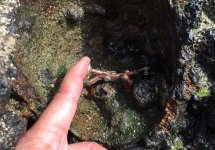49er12
Bronze Member
- Aug 22, 2013
- 1,238
- 1,627
- Detector(s) used
- Minelab xterra, Whites DFX, Notka Makro Simplex. Folks the price don’t mean everything, the question is are you willing to put in the time to learn the machine, experience will pay off I guarantee it.
- Primary Interest:
- All Treasure Hunting
We all have maps of areas, certain towns go farther back than others, point is example my county map of 1873 is far back but keep in mind early settlers transportation was horse, buggy wagon which means even historical societies have no idea of wagon roads, remember u can’t back up a horse and buggy or wagon like a car so that meant you had an oval or roundabout around cabin. Anyone know of how to recognize wagon roads, we r missing much believe me we discovered one few knew of and rewarding. Wagon road maps or routes, it’s hard anyone care to help, thanks







